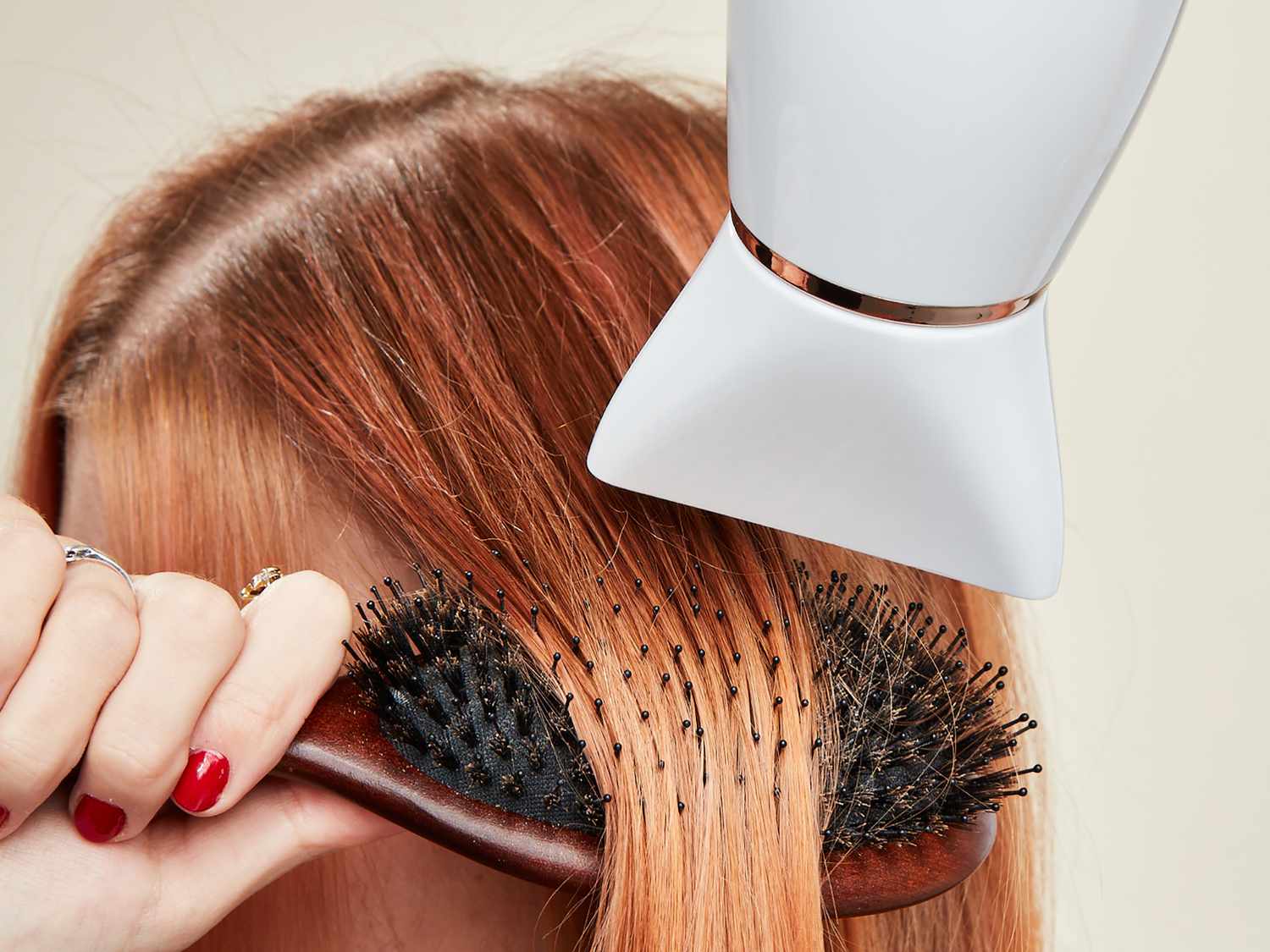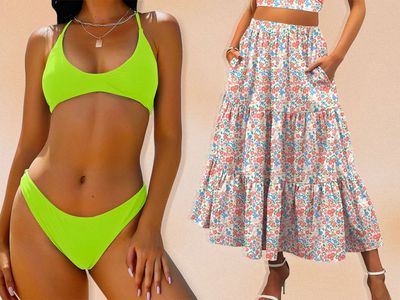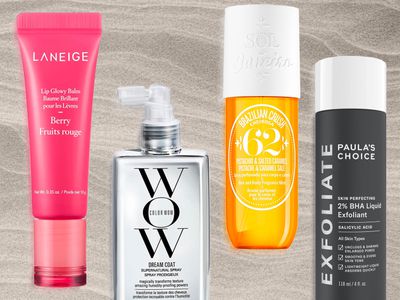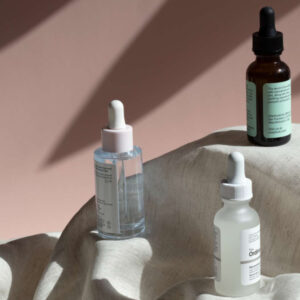
D Mills / Byrdie
In This Article
Towel-Drying Techniques Air-Drying Techniques Blow-Drying Techniques The Final Takeaway
Towel-drying, air-drying, and blow-drying wet hair each come with unique perks, but there’s one thing they all have in common: The potential to cause damage when approached incorrectly. As pro hairstylist Gabi Lopez explains, “hair is in its most fragile state when wet.”
While there are no right or wrong methods for drying your hair (your choice will depend on factors including your hair type and your styling goals), there are ways to optimize your technique—and we asked Lopez and professional hairstylist Raven Hurtado to share them. Keep reading for a full breakdown of how to towel dry, air dry, and blow dry hair properly.
Meet the Expert
- Gabi Lopez is a celebrity hairstylist whose clients include Becky G and Janet Mock.
- Raven Hurtado is a hair stylist at Maxine Salon in Chicago.
Towel-Drying Techniques
Towel drying is a great option for hair types that lean on the dry side or don’t retain moisture for long, perhaps due to having a finer density or an existing color treatment. Towel drying is also a preferred method for those who need help getting their hair dry in a shorter window of time. So, how does one approach towel drying correctly?
Squeeze, Don't Rub
"You want to gently squeeze out the excess water instead of rubbing vigorously," says Hurtado. "If you rub the hair, it can cause [it] to break or get pulled out." Our hair, no matter its shape, length, or density, "is in its most vulnerable and fragile state when it's wet," re-emphasizes Lopez.
Choose Absorbent Materials
Using whatever bath towel that’s available could be the cause of lingering frizz. Instead, have a dedicated hair towel made with an absorbent material, like microfibers. “The benefit of using a microfiber towel instead of a regular towel is [that it will] absorb water more quickly,” Hurtado says, noting that these materials can work especially well for thicker hair types that tend to retain more moisture.
If your hair doesn't retain as much moisture, cotton t-shirts will also safely absorb the excess. "T-shirts have a flat surface," Hurtado points out, and that lack of added texture against your strands "won't rough up the hair."
Byrdie Tip
Curly textures can apply their favorite products and twist their hair in sections, using a microfiber towel or t-shirt to absorb any excess. Straight hair textures can use creams or salt sprays to fine-tune their desired movement once dry and gently squeeze it in with their hands or hair towels instead of rubbing.
Air-Drying Techniques
Air drying may be your method of choice if you know your hair needs a break from heat styling or other interventions. It could also be a necessity based on the demands of your time. And while it might seem difficult to get the lowest maintenance drying option “wrong,” there are things you can do to give your hair a better chance of air drying both efficiently and effectively.
Shake It Out
Giving your hair a quick shake can go a long way when air drying, especially before and after applying styling products that accentuate your hair type. “Shaking the hair out allows air to get through, and that ventilation throughout the hair prompts faster drying,” Hurtado explains. (As a mom to two young children and someone who has thick, wavy hair, the shake-out method—which I do by flipping my head upside down a couple of times—is my personal favorite.)
Hurtado points out that using a heat protectant here can still prevent breakage and provide a soft, nourishing finish to air-dried hair. She recommends Kérastase’s Nectar Thermique ($45).
Use a Wide-Tooth Comb
“Wide-toothed combs are a great option because they don’t cause too much strain on wet, fragile hair,” says Lopez. Similar to the shake-out technique, a wide-tooth comb helps with ventilation. “By using a wide-tooth comb, hair dries faster,” says Hurtado. “This is because the wide-spaced teeth of your comb allow air to flow through.” If your preference is to air dry, but you still have some tangles to get through, this is the approach to take. Extra fine hair that’s high in volume (meaning, there’s a lot of it) might even need to consider using a leave-in detangler spray before combing through.
Byrdie Tip
When detangling, begin at the ends and slowly work your way up the hair shaft toward the roots. This will allow any tangles to move down and out with ease, especially with wet hair being more prone to breakage.
Blow-Drying Techniques
With heat involved, it's no surprise that blow-drying techniques require caution and care. Heat can be a source of serious damage to the hair, especially with prolonged use or high or frequent exposure. But the benefits of a good blowout are hard to refuse, and when done correctly, offer a desired hairstyle and appearance that could last for up to a week.
Before we dive into specific techniques that will help you maintain good hair health with this approach, Lopez walks us through the five basic steps to take for a healthy blow dry.
- Begin with semi-dry hair: Use one of the above techniques to get your hair 60-70 percent dry. “[This] will significantly reduce the… heat needed to dry the hair,” she explains. “Less time equals less heat and damage.”
- Detangle and protect: Lopez suggests using a detangler or heat protectant. “I love UNITE’s 7SECONDS Detangler ($38) because it’s the perfect lightweight base for any style,” she says. “Paddle brushes are also designed for detangling.”
- Apply styling products: “Use products that coincide with your end goal,” she tells us; think curl cream or volumizing mousse. “Choosing the right products can help you eliminate the need for styling irons after blow drying,” she adds.
- Section the hair: To perform an efficient blow dry, work in sections the same size as your brush to avoid tangling.
- Grab your tools: Lopez recommends using a blow dryer with negative ion technology, your preferred dryer attachment (nozzle, comb, or diffuser), and the brush of your choice.
Ahead, Lopez outlines the importance of these considerations for achieving proper blow-dry techniques.
Directing Airflow
Heated coils and forced hot air can leave the hair damaged, Lopez tells us, so directing the airflow from your blow dryer is a critical technique to master if you want to maintain good hair health, minimize your time spent blow drying, and achieve your desired styling goals. "Concentrating the airflow works to seal the cuticle layer and leaves you with silky smooth hair, without the damage," says Lopez.
After detangling, Lopez suggests directing your airflow in the same direction your hair grows. “This will keep you from roughing up the cuticle, which can cause frizz,” she says. Using an attachment is absolutely necessary for directing a concentrated airflow. Your chosen attachment will depend on your goals: A nozzle can be used for basic drying or round brushing, a comb will help smooth out kinky curls, and a diffuser will enhance waves or curls.
“Your nozzle doesn’t need to touch the hair [for] it to work,” Lopez notes. This is a common mistake that most often happens with nozzles and round brushes. “The closer the nozzle is to the hair, the more damaging it can be.” If you seek volume, direct the hair and airflow up and away from the roots. If you’re looking for smoother results, she says tension is key. For curly hair types with baby hairs, she suggests starting “at the hairline, so you can smooth out those baby hairs that always seem to get frizzy first.”
Diffusing
Diffusing requires a specific technique that isn’t as straightforward as a nozzle or comb attachment.
- Semi-dry using the “plop” method: Again, the goal with this first step is to reduce how much heat you’re putting on your curls. “Basically, you’ll flip your head upside down, ‘plop’ your hair into a cotton t-shirt or microfiber towel, and tie or wrap it around your head,” says Lopez. This towel-dry method helps curls find their shape and spring before setting with heat.
- Diffuse the hair upside down: Using a low-to-medium heat setting, “start underneath the hair at the nape by flipping your head over,” says Lopez. The goal with low heat is to minimize frizz, and diffusing upside down will help “concentrate at the root, always pointing down the hair shaft,” she explains.
- Apply finishing product. Once your curls are dry, Lopez recommends applying a finishing oil for extra shine and frizz taming.
"Be patient!" Lopez reminds us. "This [diffusing] process takes time, but the low heat and low airflow settings make for the bounciest, shiniest curls."
Managing Heat
No matter what attachment or technique you’re using to blow dry your hair, managing the source of your heat and its levels will make or break your hair’s health during a blow dry. “First things first: Choose a blow dryer that uses negative ion technology,” says Lopez. “Negative ions break the water molecules in wet hair, converting them to microparticles [and] making it easier and faster to dry.”
If you use the towel-drying or air-drying methods above to get the hair 60-70 percent dry, you can start your blow dry on a low-medium heat setting and still get lasting results. If you have thin, dry, or damaged hair, Lopez recommends staying between 200-300 degrees. For medium textured hair, she says, "don't exceed 350 degrees." Very thick and coarse hair may need a heat setting between 350-400 degrees, so these hair types, in particular, should never start with fully damp hair.
Once all the moisture has been removed, don't forget to use your cool shot. This will cool the hair down and help to set it in its new shape and texture. Remember that heat changes and manipulates the hair, so we need to eliminate the heat for that susceptibility to change to halt.
Byrdie Tip
Don't attempt to reshape dry hair. If something isn't sitting right, re-wet the section and try again.
The Final Takeaway
Wet hair is fragile hair. So if you opt to towel, gently squeeze with an absorbent material, and if you air dry, propel ventilation to expedite the process. And when it comes to safely using heat for a non-damaging blow dry, you need to begin with semi-dry hair, use negative ion technology, direct the airflow, and select the lowest heat temps possible for your hair type.
When it comes to drying your hair, it's all in the details. Trust us: These seemingly small adjustments will have a huge impact in the long run.
The 14 Best Professional Hair Dryers Deliver the Bounciest Blowouts
See More from Byrdie Shopping
:max_bytes(150000):strip_icc()/amazon-summer-fashion-roundup-tout-9ec515bccb2e48deae749d244dca01e3.jpg)
 I Found the 12 Best Amazon Fashion Deals to Shop for Summer, Starting at $15
I Found the 12 Best Amazon Fashion Deals to Shop for Summer, Starting at $15 :max_bytes(150000):strip_icc()/viral-beauty-picks-from-amazon-starting-at-tk-tout-8d5a6055e8b949feae6980b67b76e126.jpg)
 8 Viral Beauty Products to Shop at Amazon This Memorial Day, Starting at Just $5
8 Viral Beauty Products to Shop at Amazon This Memorial Day, Starting at Just $5 :max_bytes(150000):strip_icc()/kendall-jenner-loral-amazon-picks-under-tout-6cc0eaece182403fa37094529264f08d.jpg)
 Kendall Jenner’s Glowy Tinted Moisturizer Is Just $14 on Amazon Right Now
Kendall Jenner’s Glowy Tinted Moisturizer Is Just $14 on Amazon Right Now


